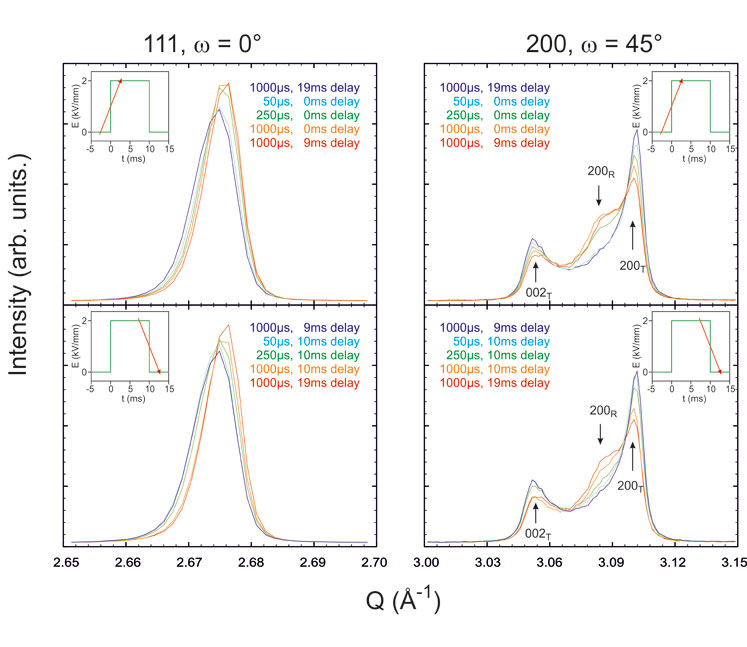Recently, research focused on lead free substitutes for the widely used PZT (PbZrxTi1-xO3). Knowledge of the rather complex phase diagram as well as the microstructural changes during duty cycles and especially after fatigue is of fundamental importance to improve these technologically relevant materials.
At beamline 04 MSPD the individual structural contributions from phase transitions, texturing and domain switching could be identified during electric cycling of new and fatigued samples. The fast MYTHEN detector together with the excellent beam conditions allowed for full pattern recording of a Q-range up to almost 10 Å-1 and 50µs time resolution.
The ferroelectric materials were measured with a MYTHEN II detector system in a pump-probe setup at beamline 04 MSPD. It was the first time such a time-resolved experiment was performed at ALBA. The research group (composed by Manuel Hinterstein, Hans Kungl, Jérôme Rouquette and Michael Knapp) was able to measure complete diffraction patterns in a Q-range up to about 10 Å-1 at 28keV and with a time resolution down to 50µs as a function of an applied electric square wave field and cycled with 50 Hz. The kinetics of the poling mechanism like domain switching, piezoelectric effect and the tetragonal-rhombohedral phase transition discovered earlier in similar systems (Phys. Rev. Lett. 107, 077602) can be studied this way. The very high time resolution was achieved with a pump-probe setup where the detector readout was gated and synchronized with the electric field cycling. By recording full diffraction patterns the individual contributions to the microstructure including evolution of texture can clearly be separated.

Fig. The experiment shows a phase transition on the rising edge of the electric field in the range of 250µs (see the peak labeled 200R), while on the trailing edge several intermediate steps can be observed over a period of more than 1000µs. At the same time the tetragonal reflections (002T, 200T) show the opposite behaviour. At the 111 reflection similar differences can be observed between rising and trailing edge.




